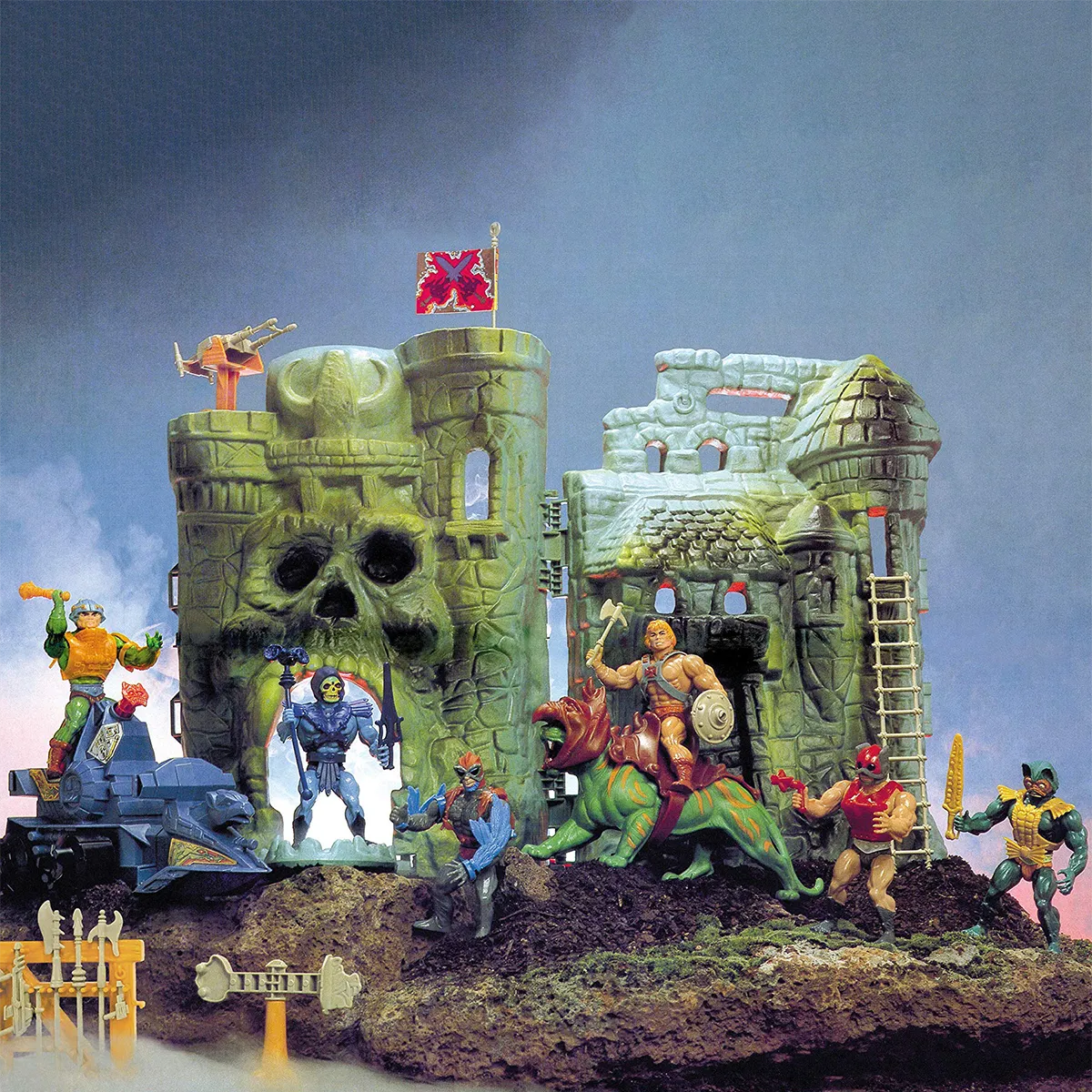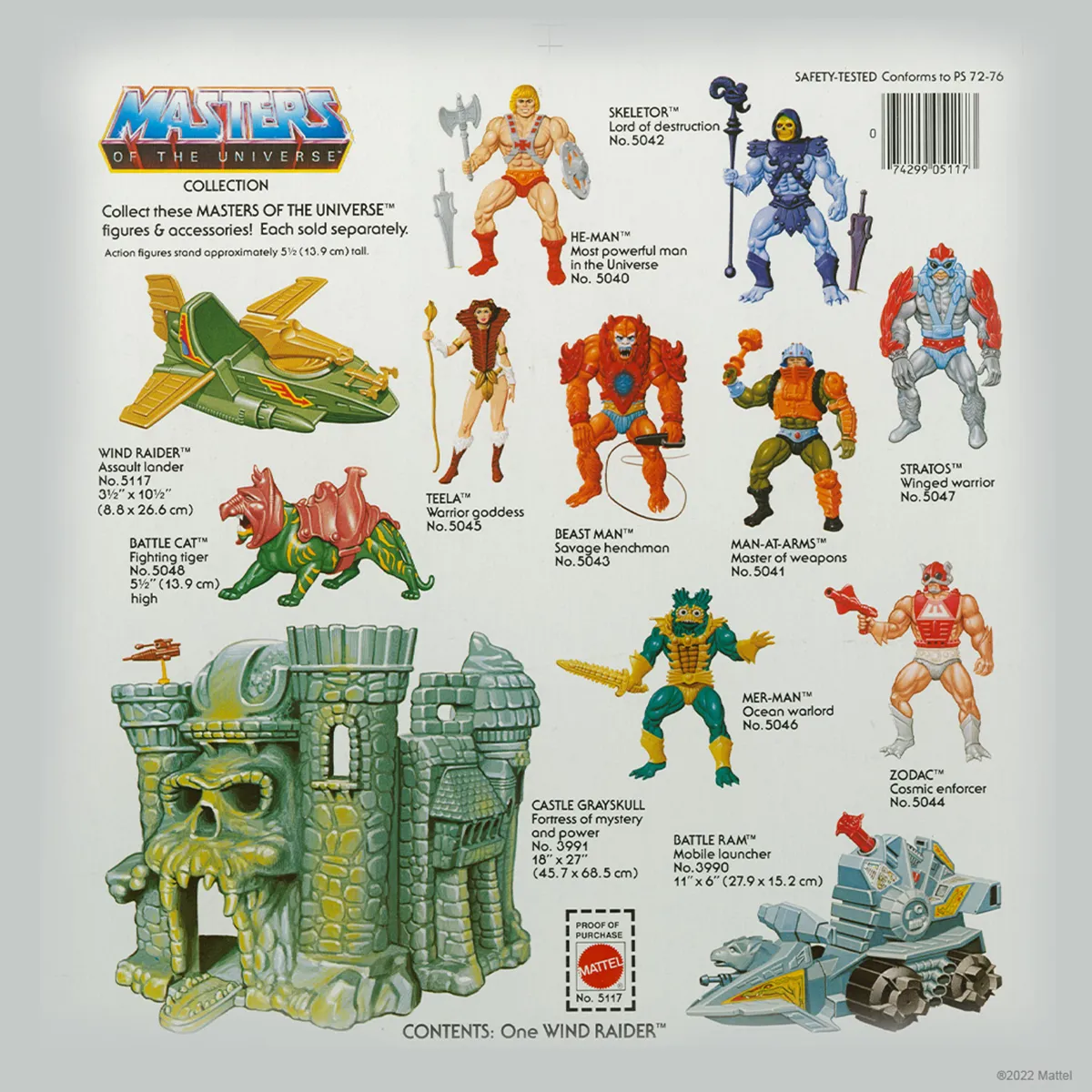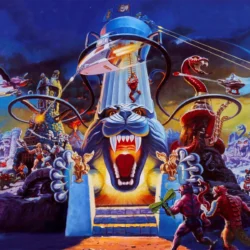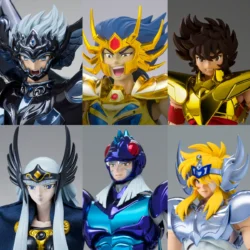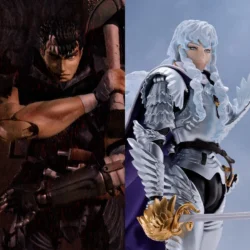If you were a boy in the ’80s, Masters of the Universe are an indelible memory of your childhood, with He-Man and Skeletor embodying the eternal clash between Good and Evil. In this article, we will trace the history of these action figures, which started a cultural phenomenon and became the symbol of an entire generation.
In the ’80s, He-Man and Skeletor were true celebrities, and the Masters of the Universe were prevalent in almost every aspect of daily life. The characters opened up an adventurous world of heroes and villains, which became the favorite playground for many kids. It’s no surprise that today, collectors regard them as a milestone in toy history, and a pillar of ‘80s nostalgia.
Let’s see how it happened!
Contents
- Masters of the Universe, the Origins of the Franchise
- The Birth of He-Man and Skeletor Action Figures
- When did Masters of the Universe Come Out?
- What Are the Masters of the Universe Action Figures Worth?
- The Importance of He-Man and the Masters of the Universe in Pop Culture
- He-Man and Masters of the Universe 2002, the Franchise Reboot
- Masters of the Universe Revelation, the New Adventures on Netflix
- Conclusions

Art of He-Man and the Masters of the Universe
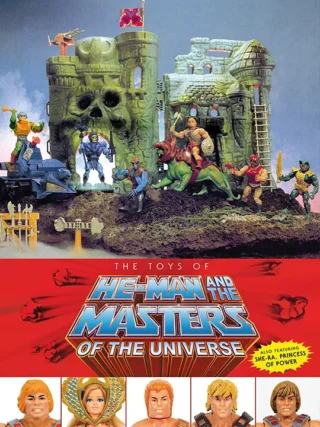
The Toys of He-Man and the Masters of the Universe
Masters of the Universe, the Origins of the Franchise
The history of Masters of the Universe begins with a big mistake. In fact, in 1976, Mattel refused to produce Star Wars action figures, leaving the incredible opportunity to Hasbro. So, when the film became a global success, the Company found itself in need for fresh ideas.
In search for new solutions, they organized a number of focus groups to study children’s play habits. They understood children wanted to create their own play rules, demanding for power above of all. In addition, they discovered stories often revolved around the conflict between Good and Evil, with heroes fighting against villains. These insights inspired what would become one of the most iconic slogans in toy history: “I have the Power!”.
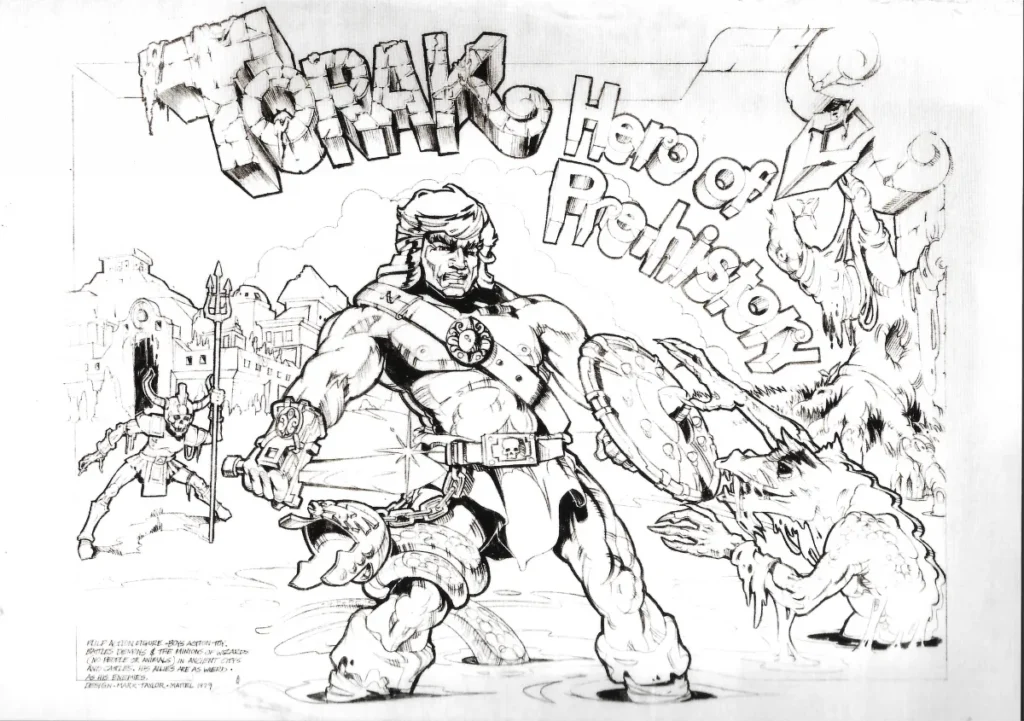
The birth of He-Man and Skeletor Action Figures
It was designer Roger Sweet who brought the concept to life in 1980. He drew inspiration from the film Conan the Barbarian and developed He-Man, a muscular hero dressed in a barbarian-like attire.
Sweet customized three Big Jim figures to create the first prototype, which he presented at the Mattel Product Conference that same year. The “He-Man trio” included a warrior wielding an axe, a soldier with a tank-shaped head, and a spaceman with a helmet resembling that of Boba Fett. It was the birth of “The Lords of Power” toy line, later renamed “Masters of the Universe.”

The character design was entrusted to Mark Taylor, a young illustrator recently hired by Mattel. The artist didn’t just softened He-Man with a more friendly look. He also created the preliminary designs for a number of characters, laying the foundation for the adventurous world of Eternia.
But his true masterpiece was Skeletor, He-man’s wicked antagonist. He drew inspiration from personal experience and, in particular, from a macabre incident he had in his childhood. In fact, when he was a boy, Taylor accidentally discovered a man’s corse in a luna park. That traumatic experience gave life to a dark and fascinating figure, embodying the very essence of Evil. Still today, Skeletor is the most successful character of the saga, surely the one fans appreciate the most.
When did Masters of the Universe Come Out?
Mattel launched the Masters of the Universe toy line in 1982. These 5½-inch action figures literally captured the market, as they stood out from the 3½-inch models of the time. Moreover, they revolutionized the industry by introducing the so-called “action features”, which allowed the characters to perform distinctive actions.
The first wave featured memorable characters such as He-Man, Skeletor, Man-at-Arms, Beast-Man, Teela, Mer-Man, Stratos, and the mysterious Zodac. The tiger Battle-Cat, the vehicle Battle-Ram, and the iconic Castle Grayskull were also part of this first release.
Between 1982 and 1987, Mattel released over 70 action figures, 25 vehicles and 6 playsets. The list also included special subjects like the giants Tytus and Megator, which were distributed only in selected markets. This huge amount of figures was also one of the causes of the decline in the late ’80s when the He-Man and Skeletor characters became scarce, making it more challenging for new children to start their collection.
The packaging was one of the keys to success. The stunning illustrations and the mini-comics included provided information about the characters, serving as a creative foundation for their stories. It was the winning weapon of a phenomenon that dominated the toy market for about a decade.
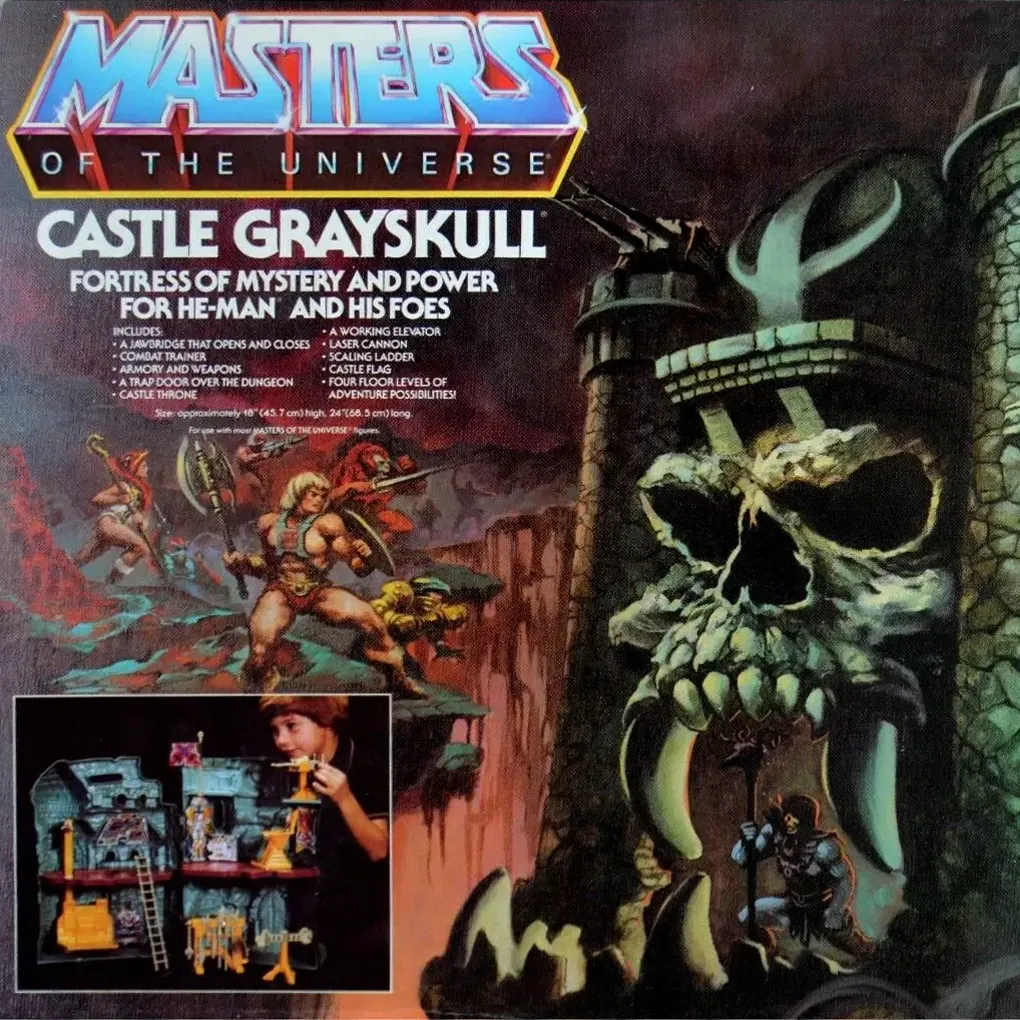
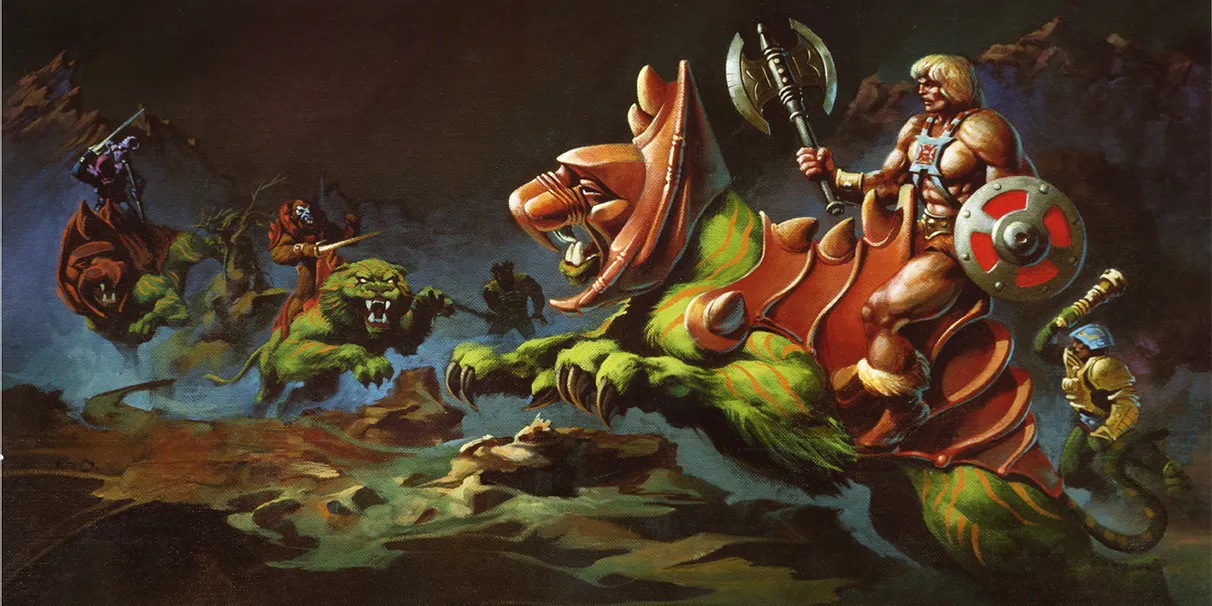
Masters of the Universe Full List!
What Are the Masters of the Universe Action Figures Worth?
Nowadays, vintage MOTU action figures are a cult sensation among toy collectors. They can be found on platforms like eBay or in dedicated social groups for buying, selling, or trading. The value varies depending on the condition and availability of the characters. Some are quite affordable, while others have become rare and expensive.
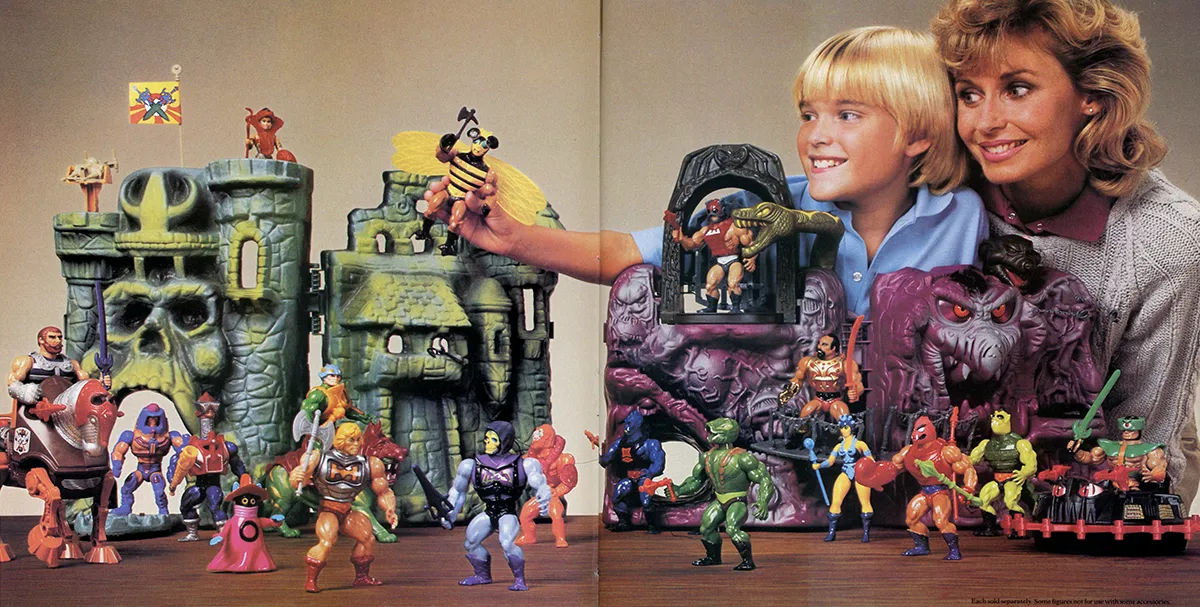
For example, original He-Man and Skeletor action figures still sealed in their packaging can cost anywhere from 1500-2000 euros and even more, depending on the edition. Laser Power He-Man, Scareglow, Wun-Dar, and the giants Tytus and Megator are among the most valuable models. However, the most expensive item remains the Eternia playset, connecting the Snake Mountain and Grayskull towers with a monorail.
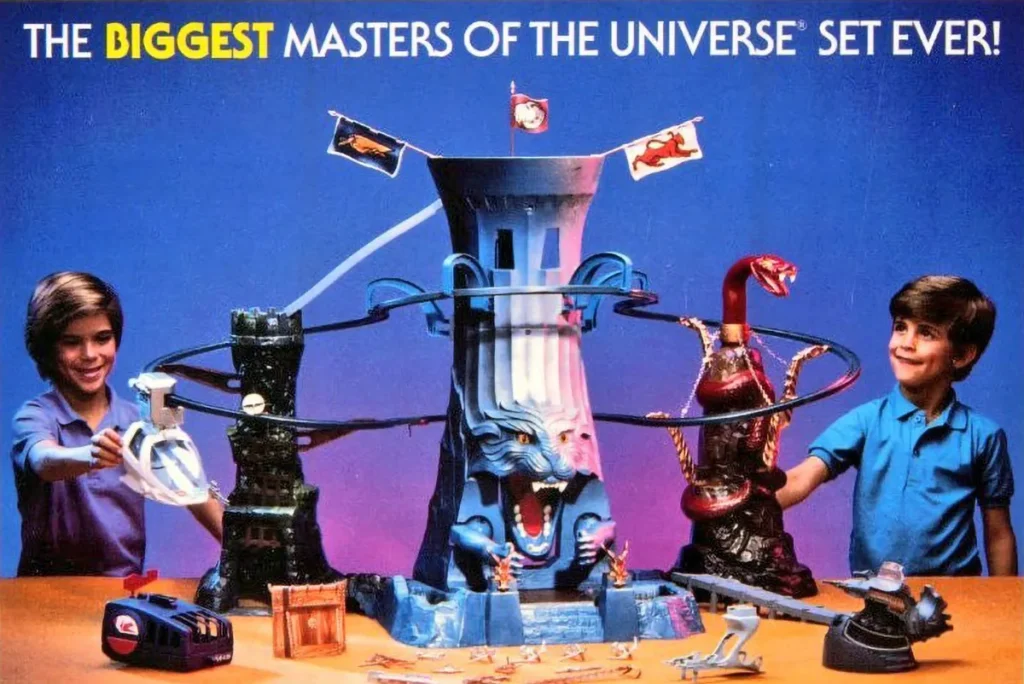
The Importance of He-Man and the Masters of the Universe in Pop Culture
Masters of the Universe had a significant impact on popular culture, also thanks to an incredible array of merchandise, which allowed the franchise to accompany children in every moment of their lives.
To support the toy line, Mattel produced an animated series in collaboration with Filmation. The show delved into the characters’ backstory and provided a basic framework for constructing new stories. In addition, each episode offered a moral lesson, thus assuming an educational value.
Lastly, in 1987, the adventures of He-Man and Skeletor turned into live-action movie, starring Dolph Lundgren. However, the cinematic adaptation did not have the desired impact, marking the beginning of a descending parabola. Mattel attempted to revive the franchise in the early 1990s, but the attempt did not yield significant results.
Over the past 20 years, MOTU has become a cult sensation among toy collectors, giving rise to a thriving market for vintage figures. Enthusiasts have also appreciated more recent lines such as MOTU Classics, Origins, and Mondo Essentials.
He-Man and the Masters of the Universe 2002, the Franchise Reboot
In 2002, a new animated series revived the interest in the adventures of He-Man and his companions. This new version not only thrilled longtime fans but also fasciated new generations, ushering in a new era.
The new episodes delved into narrative aspects that had been overlooked in the classic series, giving more room to explore the origins of individual characters. Additionally, the new saga also provided space for characters that had received little attention in the late ’80s, like the Snakemen, who are featured in the second season.
The new series inspired a new generation of action figures, highly appreciated for their more modern design and enhanced articulation. These action figures also gave life to a decent secondary market, although not reaching the same level as the vintage ones.
Masters of the Universe Revelation, the New Adventures on Netflix
In 2021, Netflix released the series Masters of the Universe: Revelation, which adds a new chapter to the MOTU story. This sequel transformed the original narrative, almost sidelining He-Man, to focus on the psychology of other characters and achieve a more contemporary approach. The true protagonist of the series is actually Teela, with her journey of self-discovery (no spoilers!).
Netflix’s production coincided with the launch of the Masterverse line, which represents another evolutionary step in the history of action figures. The figures are taller than their previous versions and have many more points of articulation, as well as a sculpt that is richer in terms of details.
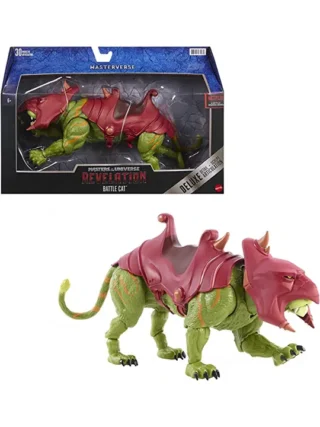
Masterverse Battlecat
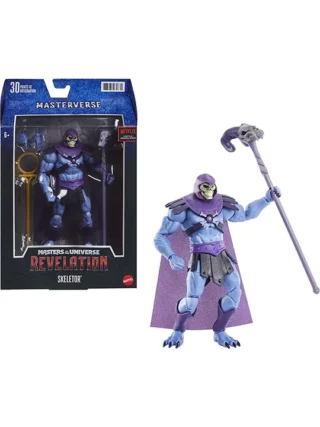
Masterverse Skeletor
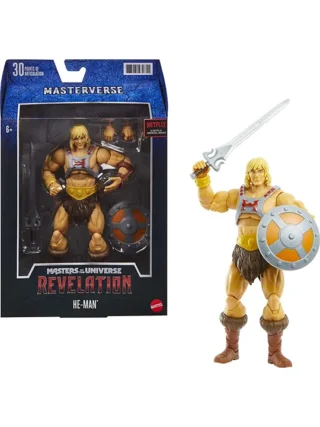
Masterverse He-Man
Conclusions
In conclusion, He-Man and the Masters of the Universe have left a lasting imprint on popular culture, introducing memorable characters and innovative toys. It is no coincidence that fans of all ages continue to collect and appreciate the action figures, cartoons, and comics that have made this franchise so iconic.
Over the years, an interesting vintage market has developed around these iconic action figures. Collectors have also appreciated more recent action figures lines, such as 200x, Origins and Mondo Essentials lines. Along with new animated adventures, these new models have kept He-Man’s popularity alive.
The Masters of the Universe is 1980s cult classic, which represents the dreams of a whole generation. The franchise is still today a pillar of the 1980s nostalgia and it comes as no surprise collectors regard these action figure as a milestone in toy history.

